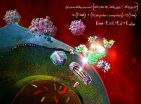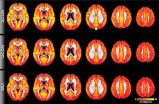The study, led by researchers at Brandeis University's Schneider Institute for Health Policy in Waltham, Massachusetts, the INCLEN Trust International in New Delhi, and the Indian Council of Medical Research's Centre for Research in Medical Entomology (CRME) in Madurai, Tamil Nadu, is the first to use systematic empirical data to estimate both the disease burden and the direct and indirect costs of dengue in India. Until now, the reported data indicated that there was an annual average of 20,000 laboratory confirmed cases. But the new estimated results were striking.
"We found that India had nearly 6 million annual clinically diagnosed dengue cases between 2006 and 2012—almost 300 times greater than the number of cases that had been officially reported," said Donald Shepard, PhD, lead author of the study and a health economics professor at Brandeis University. "Yet we believe even that number may be low because dengue reporting is better in the area we studied in the state of Tamil Nadu than in most other Indian states due to its well-established medical surveillance system." In recent decades, dengue outbreaks in India have become larger and more frequent, with a greater number of severe cases and deaths. "Good data on the incidence and cost of the illness have been lacking due to gaps in how information on individual cases is collected and reported," said Narendra Arora, MD, executive director of INCLEN.
"Understanding the full extent of the economic and disease burden of dengue in India is necessary to help policymakers and public health officials prepare for and control future outbreaks of the disease," said Brij Kishore Tyagi, PhD, senior investigator from CRME.
Dengue, a viral disease transmitted by Aedes mosquitoes, is a serious global public health problem, infecting 50 to 390 million people each year in more than 100 countries and resulting in at least 20,000 deaths annually. Symptoms of the disease range from mild fever and joint pain to potentially fatal hemorrhaging and circulatory shock. No effective anti-viral drugs yet exist to treat the illness, and large mosquito-control efforts have thus far failed to stem the increasing incidence and spread of dengue epidemics.
India is believed to have more cases of dengue than any other country in the world, and except for a slight dip in 2011, the incidence rate has grown steadily there in recent years. In 2013, India's National Vector Borne Diseases Control Program reported that the country had experienced an annual average of 20,474 dengue cases and 132 dengue-related deaths since 2007, but infectious disease experts believe those official numbers likely reflect only a small fraction of actual cases. India had a major dengue outbreak in 2013, with more than 55,000 reported cases, triggered largely by the heaviest rains in two decades. Standing water provides a breeding ground for disease-carrying mosquitoes.
Methodology and key findings To reach a more accurate assessment of both the incidence and economic burden of dengue in India, Shepard and his colleagues conducted a three-part national retrospective study.
To determine the annual number of dengue patients in India, the researchers collected data on patients who had been hospitalized with the disease in the Madurai district of the state of Tamil Nadu during a three-year period (2009-2011). They then used that data, along with less complete disease surveillance data from 18 other states and information from a panel of dengue experts, to calculate a national estimate for annual dengue cases, including ambulatory cases (ones in which the patient was treated but not hospitalized). To estimate the cost of each dengue case, the researchers analyzed the medical records of 1,541 dengue patients who had been treated in 10 public and private medical college hospitals across India from 2006 through 2011. Gaps in those data were then filled in through a survey of 151 patients who had received care at a medical college hospital in Mumbai in 2012 and 2013. In the final part of the study, the researchers used those cost findings, along with the results of the Madurai analysis, to estimate the total annual economic burden of dengue in India.
As for dengue's economic burden, the researchers found that the total direct medical cost to India was $548 million per year, or about $94.85 per patient. Given that the average dengue case lasts about two weeks, that figure breaks down to $6.77 per patient per day. Dengue is therefore more expensive to treat in India than tuberculosis. Other research has found that a case of tuberculosis, which averages 72 days in India, costs $241 to $281, or $3.39 to $3.96 per day.
As Shepard and his colleagues point out, however, the direct medical cost of an illness is only part of its overall economic burden. "There are other costs, most of which tend to be borne by individuals and households, such as the cost of traveling to and from treatment and lost income due to lost time at work," said study co-author Yara Halasa, a health economics researcher at Brandeis University.
Based on other research that examined the economic burden of dengue on low- and middle-income countries elsewhere in the world, the study researchers determined that the direct medical costs of the disease represent only 49 percent of the disease's overall costs. The overall annual economic cost of dengue in India, therefore, is about $1.11 billion annually, or $0.88 per year for every person in the country.
A need for more answers While this study indicates that the economic and disease burdens of dengue in India are hundreds of times greater than estimates based entirely on official reports, further studies are needed to garner additional detail. Most notably, the incidence estimate relies heavily on data from only one district: Madurai. In addition, the costing estimates were based on only 10 medical college hospitals—although those hospitals were selected from 10 separate states in India, spanning all geographic regions of the country, and included both private and public hospitals.
"This study provides a valuable insight into the dengue disease burden in India. Dengue, in addition to inflicting pain and suffering, also extracts a significant social and economic toll on India," said Alan Magill, MD, president of the American Society of Tropical Medicine and Hygiene, which publishes the journal. "Health economists, policymakers and researchers can and should work hand-in-hand with tools like this so we can fully appreciate the impact on populations, not just individuals. It's the smart thing to do and the right thing to do."
INFORMATION:
The study was funded through a contract with vaccine maker Sanofi Pasteur, which has a dengue vaccine in late-stage clinical development. The company, however, was not involved in the actual research or in preparing the study for publication.
About the American Society of Tropical Medicine and Hygiene
ASTMH, founded in 1903, is a worldwide organization of scientists, clinicians and program professionals whose mission is to promote global health through the prevention and control of infectious and other diseases that disproportionately afflict the global poor.
About the American Journal of Tropical Medicine and Hygiene
Continuously published since 1921, AJTMH is the peer-reviewed journal of the American Society of Tropical Medicine and Hygiene, and the world's leading voice in the fields of tropical medicine and global health. AJTMH disseminates new knowledge in fundamental, translational, clinical and public health sciences focusing on improving global health.

